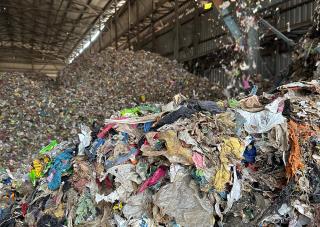Traditionally gypsum is used in cement manufacture to provide the necessary source of sulphate which retards the excessively rapid hydration of the C3A phase in cement clinker. In recent years sources of sulphate have become more varied, including the use of various waste products from other industries.
Ordinary Portland cement clinker contains four main phases: C3S, C2S, C3A and C4AF. C3S and C2S are the phases that, when reacted with water, produce the material which holds concrete and mortar together, known as C-S-H.
C3A and C4AF are essential parts of the clinker because in the hottest section of the kiln these two form a liquid which dissolves lime from the raw materials, making it mobile so that it can react with the other oxides. When C4AF reacts with water it rapidly forms a protective coating of hydrate which retards further hydration. C3A reaction with water alone is also rapid but is very extensive, forming large plate-like crystals of calcium aluminate hydrates which set the mixture of water and cement so that it can become unusable, a process known as flash-set. To counter this, when milling clinker to make cement, a further ingredient is usually added in the form of a sulphate-bearing material. This sulphate must be in a readily-soluble form so that when the cement is mixed with water, SO3 is released quickly into the mixing water. The combination of C3A, water and SO3 forms a different compound known as ettringite which is seen in the electron microscope as small tubular crystals which do not produce the flash-set and which slow the rate of hydration of C3A.
